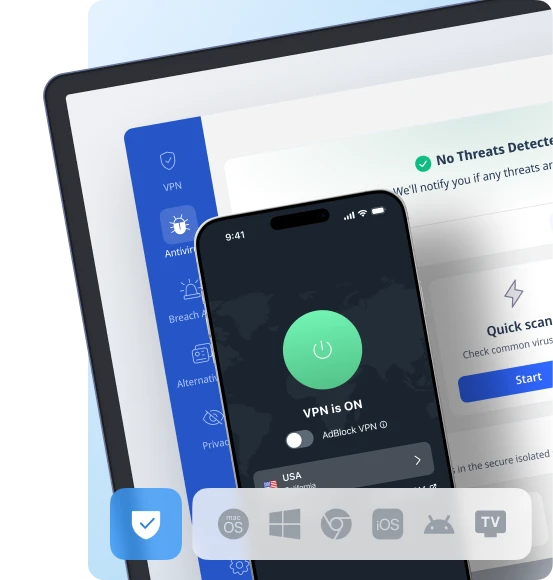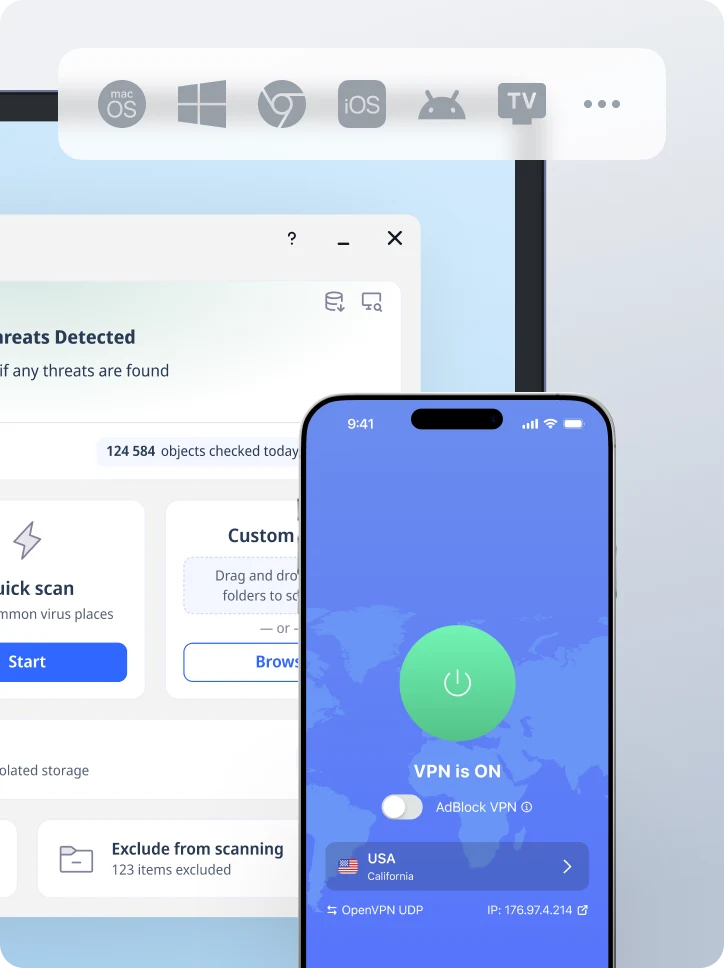Webcam Rips: What They Are, How They Happen, and How to Stop Them

Hidden cameras used to be spy-movie props. Today they sit inside everyday laptops and phones, waiting for the wrong click to turn them against you. Webcam rips are unauthorized recordings snatched from hacked cameras. They usually flood pirate forums within hours, damaging reputations and bank balances alike.
In early 2025 the FBI warned that HiatusRAT operators were scanning home cameras for unpatched holes, then dumping entire webcam video collections on extortion markets. Meanwhile, bulk email scams threaten to leak non-existent “intimate videos” unless victims pay in crypto.
In this article, you will find out how thieves grab those clips, how to spot a breach, and the steps that keep every pixel private with VeePN.
Webcam rips: why you should care
Many users broadcast work calls, family get-togethers, even doctor appointments on camera. When thieves steal that video they are not just humiliating you, they are stealing sellable data, which includes facial biometrics to room plans that the criminals can use later.
How hackers capture webcam videos
Here is how they do it:
Malware on a phishing page
A single malicious site link can drop Trojan apps such as njRAT that silently flip on your camera, record, and upload the files. The April 2025 sextortion wave spoofed the victim’s own email to look credible, then claimed “proof” via hijacked photos. Once installed the RAT tags clips by categories: business, household, explicit, and pushes them to a command server.
IoT exploits and open ports
Cheap webcams are often shipped with old firmware. During the 2024 HiatusRAT campaign crooks used a GitHub scanner to track vulnerable DVRs and Hikvision models, riding CVE-2021-36260 to stream feeds in real time. Anyone re-selling those feeds labels them “LIVE” on a pirate web page so buyers can watch strangers in their living rooms.
Public Wi-Fi sniffing
Coffee-shop hotspots are free for shoppers, and for packet sniffers. Attackers run the connection through a rogue access point and inject JavaScript that flips HTML5 camera permissions on any website you open. Sessions are brief, so crooks also automate uploads once a visitor disconnects.
Credential stuffing
Numerous cameras usually reuse the same email-password combinations. When a database is leaked, bots will attempt to guess the pair on camera applications that are popular. And in case you reused them, chances are your content may be streaming on a darknet content hub.
Why stolen webcam videos sell so well
Blackmail kits
Extortionists package “face plus act” clips, and they respond to their targets with time stamped stills to prove their possession. So, the average payouts are from $800 to $1500.
Voyeur streaming sites
Shady websites advertise 100 percent of the totally private room with no advertisements to attract inquisitive visitors. They make ends meet by blending stolen feeds and staged shows and dividing them into fetish categories to subscribers.
AI training sets
Leaked mobile camera footage trains deepfake models. Developers scrape faces, rooms, and lighting variations to improve synthetic-video realism—without ever asking permission from the people being filmed.
Signs your camera has been hijacked
Before panic sets in, check for these tell-tale issues:
- Unexpected LED activity when no app is open.
- New folders packed with oddly-named MP4s or JPGs.
- Browser asks twice for camera permission on the same page. This is a sign JavaScript was injected.
- The battery drains fast on mobile because the sensor runs in the background.
- Friends receive emails that include screenshots only your lens could capture.
Catch any two of these and act fast: disconnect, scan, and change passwords.
First-line defenses you can apply
Locking down hardware does not require a tinfoil hat. It requires easy but consistent habits:
Control permissions per website
Grant your camera access on the HTTPS websites you trust. We have a guide to configuring per-site rules in Chrome, Firefox, Safari, and Edge that takes you through the clicks.
Patch firmware and apps
Vendors push fixes for remote-code bugs like CVE-2024-0778 in Uniview cameras weeks before crooks automate them. Enable auto-update and reboot gear monthly.
Cover or disable idle cameras
A lens cap defeats even zero-day malware. For built-in laptop cams use a slider sticker so you can still take work calls.
Segment home networks
Put smart cameras on a guest VLAN. If one gets popped the attacker cannot hop to laptops that hold sensitive content.
Stop webcam rips with VeePN’s privacy-first tools
Even solid hygiene leaves gaps on open Wi-Fi or during a sudden breach. VeePN is designed for those moments, providing an always-on tunnel that scrambles snoopers:
- Encrypted connections. VeePN wraps every packet—video, audio, metadata—in AES-256 encryption. Attackers touching hotel routers see undecipherable blobs instead of live footage.
- IP address masking. Each session rides through a shared VPN exit node. Tools that scan your public IP never even get to the actual device. It eliminates many direct exploit paths.
- Security on public Wi-Fi. The app auto-engages on unfamiliar hotspots, shielding you in cafés, airports, and co-working spaces where rogue APs harvest camera traffic.
- Kill Switch for leak protection. If a tunnel blip occurs, VeePN halts all transfers until the line is safe again—no half-finished clip ever leaks mid-upload.
- Cross-device security. One account guards laptops, tablets, and phones (any gadget with a lens) so every angle stays covered, even on mobile data.
- Breach Alert monitoring. The moment stolen credentials tied to your email hit leak forums, VeePN pings you. Change passwords before someone logs into the nanny cam dashboard.
Try every VeePN feature without risks, as we offer a 30-day money-back guarantee.
VeePN is freedom
Download VeePN Client for All Platforms
Enjoy a smooth VPN experience anywhere, anytime. No matter the device you have — phone or laptop, tablet or router — VeePN’s next-gen data protection and ultra-fast speeds will cover all of them.
Download for PC Download for Mac IOS and Android App
IOS and Android App
Want secure browsing while reading this?
See the difference for yourself - Try VeePN PRO for 3-days for $1, no risk, no pressure.
Start My $1 TrialThen VeePN PRO 1-year plan







